| Category | Assignment | Subject | Engineering |
|---|---|---|---|
| University | Coventry University | Module Title | 7019ENG Air Transport Business Environment and Policy |
| Assessment Title | Policy Portfolio |
|---|
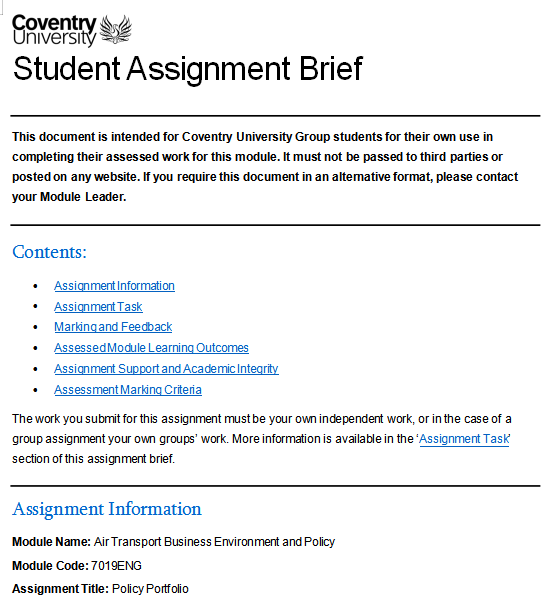
This portfolio assignment includes 4 written tasks that you must engage with and progressively carry out throughout the 6 weeks of learning.
The tasks are highly aligned to teaching/learning activities of this module; hence you are advised to ensure attendance and engagement with all synchronous in- person and asynchronous activities.
This task invites you to reflect critically on your learning journey across Weeks 1–6. You will draw on your weekly log maintained throughout the module based on the template in Appendix I (There is no word count restriction on the learning log. This must be submitted as an appendix to the assessment) to select key learning moments, debates, and experiences that shaped your understanding of the key theories, debates and principles in Air Transport Business Environment and Policy and your approach to the portfolio assessment.
Use the following format to write your critical reflection based on your weekly learning log.
You are provided with an AI-generated response to the following question in Appendix II: “How do factors in the global aviation business environment shape and influence airline market structures?” The response was generated using Copilot giving the question as a direct prompt to write a 1500-word answer with references.
Your task is to critically evaluate the AI-generated response by identifying:
You must support your critique using module concepts learnt on aviation systems, stakeholder theories and economics and readings, and independent research.
This task invites you to critically review the seminar discussion held in Week 2, which explored the effectiveness of the International Civil Aviation Organization (ICAO) in enforcing global aviation standards, particularly in the context of its response to the COVID-19 pandemic (based on the Policy Brief in Appendix III).
You will reflect on the seminar content your group produced and presented as an answer to this question and the perspectives shared by peers in the classroom and the lecturer’s feedback. Your review should demonstrate critical thinking, synthesis of ideas, and application of module concepts with appropriate reference to academic sources.
Below is a guideline for your critical review
1.Analyse your group’s response to the seminar question and identify its strengths and weaknesses, based on your own personal reflection, peer responses and lecturer’s feedback.
You can conduct this review along
2.Based on your above review propose improvements you would make to the group response by outlining
You must choose one of the following air transport policy topics and develop a policy communication infographic material to be published on social media to advocate your policy opinion on the topic. The infographic must demonstrate critical understanding of the policy context, stakeholder interests, problems and solutions. Prior to developing the infographic, you must study the chosen topic carefully and conduct a thorough evaluation of the effectiveness of the policy/problems associated. You must apply relevant theories and regulatory/ ethical policy principles in your analysis and solution development. To demonstrate your critical application of theory to evaluate policy challenges and develop sustainable solutions and advocate them effectively, you must submit a 1000-word text description explaining how the infographic delivers the below:
Choice of Policy Topics
Achieve Higher Grades of 7019ENG Assignment & Raise Your Grades
Order Non Plagiarized AssignmentThe Learning Outcomes for this module align to the marking criteria which can be found at the end of this brief. Ensure you understand the marking criteria to ensure successful achievement of the assessment task. The following module learning outcomes are assessed in this task:
MLO 1: Critically evaluate and apply economic theories, regulations, and ethical principles to ensure the efficient delivery of customer-centric, secure, safe, and sustainable air transport solutions.
MLO 2: Select and apply relevant policy tools, economic metrics and methods to support air transport regulation, policy analysis and development.
MLO 3: Critically evaluate global aviation challenges and propose sustainable policy solutions considering various stakeholders and drivers in the air transport business environment.
MLO 4: Critically analyse and synthesise current research and practice relevant to the advancement of sustainable air transport policy solutions.
MLO 5: Advocate policy solutions and recommendations with integrity developing a professional approach to written and oral presentation.
|
|
Fail 0 to 29% |
Fail 30, 35% |
40 to 49% |
50 to 59% |
60 to 69% |
70 to 79% |
80 to 100% |
|
TASK1: Critical Reflection of Module Learning and Alignment to Learning Outcomes of Air Transport Business Environment and Policy
Weighting:25% |
Outcomes not met. Reflection lacks coherence and relevance. No meaningful engagement with module content or learning outcomes. No evidence of independent exploration or assessment planning. No mapping to MLOs or graduate attributes. |
Outcomes not met. Limited reflection with superficial or vague references to learning. Minimal engagement with module concepts. Independent exploration and assessment planning are absent or poorly described. Mapping to MLOs is unclear or incorrect. |
Outcomes met. Basic reflection with some relevant insights. Shows limited engagement with module content and learning outcomes. Independent exploration is mentioned but lacks depth. Assessment planning is described but not critically evaluated. Mapping to MLOs and graduate attributes is attempted but lacks clarity. |
Good. Clear reflection with relevant examples from the module. Demonstrates engagement with key concepts and some critical thinking. Independent exploration is evident and somewhat evaluated. Assessment planning is described with some insight. Mapping to MLOs and graduate attributes is appropriate but could be more integrated. |
Very good. Thoughtful and well-structured reflection. Demonstrates strong engagement with module content and critical debates. Independent exploration is purposeful and well-evaluated. Assessment planning is clearly articulated. Mapping to MLOs and graduate attributes is well-integrated and supported by examples. |
Excellent. Deep and insightful reflection showing critical engagement with complex ideas. Independent exploration is extensive and well-justified. Assessment planning is strategic and reflective. Mapping to MLOs and graduate attributes is explicit, nuanced, and supported by strong evidence. |
Exceptional. Exceptional reflection demonstrating intellectual maturity and originality. Engages critically with module content, debates, and theories. Independent exploration is sophisticated and contributes meaningfully to learning. Assessment planning shows advanced strategic thinking. Mapping to MLOs and graduate attributes is seamless, insightful, and exemplary. |
|
TASK2: Thoughtful critique of the AI- generated response identifying strengths, weaknesses, and gaps in aviation- specific knowledge. Evaluation of theoretical foundations, regulatory principles, and key literature.
Weighting: 25% |
Outcomes not met. Minimal or no meaningful critique of the AI-generated response. Fails to identify strengths or weaknesses. No reference to aviation-specific content, economic or regulatory theory. No use of module learning outcomes (MLOs). No evidence of independent research or reflective learning and largely generative. |
Outcomes not met. Limited critique of the AI-generated response. Observations are vague or unsupported. Limited understanding of aviation business environment Weak or inaccurate use of economic theory and regulation. Independent research is absent or irrelevant. Reflection is superficial and disconnected from MLOs. |
Outcomes met. Basic critique of the AI- generated response. Identifies some strengths and weaknesses. Some reference to aviation- specific content and module concepts (e.g., market structures, regulatory rationale). Independent research is present but not well integrated. Reflection shows limited insight into learning and MLO achievement. |
Good. Clear and structured critique of the AI-generated response. Reasonable identification of gaps in aviation knowledge and theoretical foundations. Use of module concepts is evident. Independent research supports the critique. Reflection shows developing critical thinking and partial alignment to MLOs and graduate attributes. |
Very good. Thoughtful and well-supported critique of the AI-generated response. Strong analysis of aviation- specific gaps and theoretical limitations. Module concepts (e.g., regulatory theory, sustainability, governance) are well integrated. Independent research is relevant and enhances the critique. Reflection demonstrates synthesis and clear alignment to MLOs 1, 2, and 3 and to some degree graduate attributes. |
Excellent. Deep and insightful critique of the AI-generated response. Comprehensive identification of strengths, weaknesses, and theoretical gaps. Module learning outcomes are explicitly addressed through integration of economic, regulatory, and ethical principles. Independent research adds value. Reflection is analytical and clearly aligned to MLOs 1, 2, 3, and graduate attributes (Act with Integrity, Get Things Done). |
Exceptional critique showing intellectual maturity. Sophisticated analysis of the AI-generated response using multiple theoretical and regulatory perspectives. Extensive and expertly integrated independent research. Reflection is original, nuanced, and clearly aligned to MLOs 1, 2, 3, and graduate attributes (Act with Integrity, Get Things Done). Demonstrates a professional approach to critique and policy analysis. |
|
TASK 3: Critical Reflection and Review of the Seminar content and |
Outcomes not met. Minimal or no meaningful engagement |
Outcomes not met. Limited engagement with the |
Outcomes met. Demonstrates basic engagement |
Good. Clear engagement with seminar content and |
Very Good. Thoughtful and well-structured review of the |
Excellent. Deep and insightful engagement with seminar |
Exceptional critical review of the seminar response |
|
engagement with theoretical and regulatory principles with evidence of independent learning.
Weighting : 25% |
with the seminar or group response. Lacks understanding of ICAO’s role. No use of module theories or frameworks. No evidence of reflection or independent research. |
seminar and group response. Basic or inaccurate understanding of ICAO’s role. Minimal reference to module concepts. Reflection is superficial. Independent research is weak or irrelevant. |
with the seminar and group response. Some use of module theories and frameworks. Independent research is present but not well integrated. Reflection shows limited insight into learning. |
group response. Reasonable analysis of ICAO’s role using relevant theories. Independent research supports the review. Reflection is structured and shows developing critical insight |
seminar and group response. Strong analysis of ICAO’s effectiveness using module concepts and regulatory principles. Independent research is relevant and well-integrated. Reflection demonstrates critical thinking and synthesis. |
content and group response. Critical analysis of ICAO’s role is well-supported by theory and research. Independent exploration adds value. Reflection is analytical and well-connected to learning outcomes. |
showing intellectual maturity. Sophisticated analysis of ICAO’s role using multiple theoretical and regulatory perspectives. Independent research is extensive and expertly integrated. Reflection is original, nuanced, and clearly aligned to learning outcomes and graduate attributes. |
|
Policy Evaluation Solutions and Advocacy (Infographic + 1000- word description) Weighting: 25% |
Outcomes not met. Demonstrates no meaningful understanding of economic theories, regulatory frameworks, or ethical principles. Fails to identify or analyse policy challenges. No |
Outcomes not met. Shows limited or inaccurate application of economic or regulatory concepts. Policy context is poorly understood or misrepresented. Stakeholder perspectives are vague or |
Outcomes met. Demonstrates basic understanding of economic and regulatory principles. Identifies a policy issue and attempts to analyse it, though with limited depth. Some |
Good. Applies relevant theories and policy tools with reasonable accuracy. Policy challenge is clearly identified and analysed. Stakeholder interests are acknowledged. Infographic is clear and |
Very good. Demonstrates strong understanding of economic, regulatory, and ethical principles. Provides a well- reasoned analysis of the policy issue, supported by appropriate |
Excellent. Applies complex theories and policy frameworks with insight and accuracy. Offers a critical and well- supported evaluation of the policy issue. Demonstrates |
Exceptional. Demonstrates exceptional insight and originality in applying economic, regulatory, and ethical principles. Provides a sophisticated and nuanced evaluation of |
|
|
evidence of stakeholder consideration or sustainable thinking. Infographic is missing or irrelevant. Written explanation lacks structure, clarity, and critical engagement. |
missing. Infographic is present but lacks coherence or relevance. Written explanation is descriptive with minimal analysis or justification. |
stakeholder awareness is evident. Infographic communicates a basic message. Written explanation shows some structure and attempts to justify the policy position. |
communicates the core message. Written explanation is structured and includes some critical evaluation and justification. |
tools and data. Stakeholder perspectives are well- integrated. Infographic is well-designed and persuasive. Written explanation is analytical, well- structured, and clearly communicates the rationale behind the advocacy. |
clear understanding of stakeholder dynamics and sustainable policy development. Infographic is visually compelling and strategically communicates the advocacy message. Written explanation is coherent, analytical, and professionally presented. |
the policy issue, with deep stakeholder analysis and innovative thinking. Infographic is highly impactful, creative, and professionally executed. Written explanation is intellectually mature, persuasive, and exemplifies a professional standard of policy communication. |
Weekly Learning Log Template for Air Transport Business Environment and Policy
|
Week 1 |
Description of Your Learning (Summarise what was covered in lectures, seminars, and readings. Include key topics, theories, frameworks, or case studies discussed.) |
Key Learning Points and/or Perspective Shifts (Highlight the most important insights you gained. Did anything challenge your previous understanding or shift your perspective?) |
Questions/ Confusions/ Agreements/ Disagreements you had regarding concepts learnt. (Note any concepts you found confusing, disagreed with, or strongly agreed with. This is a space for critical engagement.) |
Independent Exploration of Knowledge (Describe any additional research you did. What sources did you consult including any AI tools? Why? What did you learn from them?) |
Assessment Planning, Process and Progress (Reflect on how you began preparing for your portfolio tasks. What ideas did you explore? What challenges did you face? What progress did you make?) |
|
1 |
Example only and |
Example only and |
Example only and does not |
Example only and does |
Example only and does not |
|
|
does not cover |
does not cover |
cover grounds for a whole |
not cover grounds for a |
cover grounds for a whole |
|
|
grounds for a |
grounds for a whole |
week: |
whole week: |
week: |
|
|
whole week: |
week: |
Confused about how ICAO |
Searched for ICAO’s legal |
Started brainstorming Task 2. |
|
|
Lecture on the global |
Realised how |
enforces standards globally |
authority on Copilot. It |
Used ChatGPT to generate a |
|
|
civil aviation system |
interconnected aviation |
and work with other |
hinted on transnational |
sample response to “What are |
|
|
and PESTEL |
is with political and |
international organisations— |
regulation. Used Locate to |
the key challenges in global |
|
|
analysis; seminar |
economic systems. |
does it have legal authority |
find xxxxxx textbook on |
aviation governance?” |
|
|
discussion on |
|
over IATA? |
international regulation, |
Planning to critique its lack of |
|
|
aviation stakeholders |
|
|
which explained how |
stakeholder nuance. |
|
|
and current |
|
|
international law works. |
|
|
|
challenges. |
|
|
This book elaborates |
|
|
|
|
|
|
xxxxxx concept beyond |
|
|
|
|
|
|
Copilot answer (explain |
|
|
|
|
|
|
how). |
|
|
2 |
|
|
|
|
|
|
3 |
|
|
|
|
|
|
4 |
|
|
|
|
|
|
5 |
|
|
|
|
|
|
6 |
|
|
|
|
|
AI-Generated Response to How do factors in the global aviation business environment shape and influence airline market structures?
Airline market structures are shaped and influenced by a complex interplay of factors within the global aviation business environment. These factors include macroeconomic conditions, regulatory frameworks, technological advancements, environmental pressures, and geopolitical dynamics. Understanding how these elements interact is essential for analysing the competitive landscape of the airline industry, which ranges from monopolies and oligopolies to more liberalised and competitive markets. Airline market structures determine how airlines compete, set prices, and deliver services, and are therefore critical to the efficiency and sustainability of the global air transport system. This essay explores these factors in depth, drawing on examples from different regions and airline models to illustrate their impact.
Macroeconomic conditions play a foundational role in shaping airline market structures. Economic growth, inflation, exchange rates, and fuel prices directly affect airline profitability, demand for air travel, and investment capacity. In high-growth economies, increased disposable income and business activity stimulate demand for air travel, encouraging market entry and competition. Conversely, economic downturns often lead to consolidation, reduced capacity, and even market exits. For example, during the global financial crisis of 2008–2009, many airlines faced liquidity challenges, leading to mergers and acquisitions that reinforced oligopolistic structures in certain regions (Doganis, 2019). Similarly, the COVID-19 pandemic disrupted global aviation, prompting government bailouts and temporary monopolistic conditions in some domestic markets. In emerging markets, rapid economic development has led to the rise of new carriers, often supported by state investment, which alters competitive dynamics and introduces hybrid market structures. Additionally, fluctuations in oil prices and currency exchange rates can significantly impact operating costs and profitability, influencing strategic decisions such as route planning and fleet composition. Airlines in developing economies often face volatile macroeconomic conditions, which can hinder their ability to compete globally, reinforcing regional monopolies or duopolies.
Regulation is one of the most significant determinants of airline market structure. Governments and supranational bodies such as the International Civil Aviation Organization (ICAO) and the European Union (EU) influence market access, ownership rules, competition policy, and consumer protection. Historically, the airline industry was characterised by state-owned monopolies. However, the liberalisation of air transport markets—particularly through Open Skies agreements—has led to increased competition and the emergence of low-cost carriers (LCCs). The EU’s liberalisation in the 1990s is a prime example, where deregulation allowed airlines to operate freely across member states, resulting in a shift from monopolistic to oligopolistic and competitive structures (Button, 2003). Regulatory barriers such as foreign ownership restrictions and bilateral air service agreements continue to shape market structures. In regions where liberalisation is limited, national carriers often retain dominant positions, while in liberalised markets, competition flourishes. Additionally, competition laws and antitrust regulations play a role in preventing market abuse and ensuring fair access to airport slots and infrastructure. Regulatory stability and transparency also influence investor confidence and long- term strategic planning in the aviation sector. For example, the U.S. Department of Transportation and the European Commission have frameworks that promote competition and consumer rights, which have led to more diversified market structures.
Technology has transformed airline operations and influenced market structures by enabling new business models and improving efficiency. The rise of online booking platforms, dynamic pricing algorithms, and data analytics has empowered airlines to optimise revenue management and customer segmentation. Moreover, advancements in aircraft technology—such as fuel-efficient models like the Boeing 787 and Airbus A350—have reduced operating costs and enabled long-haul point-to-point services. This has allowed smaller carriers to enter markets previously dominated by network carriers, challenging traditional hub-and-spoke models (Belobaba et al., 2015). Digitalisation also supports the growth of LCCs, which rely on lean operations and direct distribution channels. As a result, technological innovation contributes to more competitive market structures, especially in regions with supportive regulatory environments. Furthermore, the integration of artificial intelligence (AI) in route optimisation, predictive maintenance, and customer service is reshaping operational strategies and enhancing competitiveness across market segments. Blockchain technology is also being explored for secure ticketing and loyalty programmes, potentially disrupting traditional distribution channels. The adoption of biometric boarding and automated check-in systems has also improved passenger experience and operational efficiency, allowing airlines to differentiate themselves in competitive markets.
Environmental concerns are increasingly shaping airline market structures. Regulatory initiatives such as the Carbon Offsetting and Reduction Scheme for International Aviation (CORSIA) and national emissions targets are influencing fleet decisions, route planning, and investment strategies. Airlines with the financial capacity to invest in sustainable technologies—such as sustainable aviation fuels (SAFs) and electric aircraft—may gain competitive advantages, potentially reinforcing oligopolistic tendencies. Smaller carriers may struggle to meet environmental standards, leading to market exits or consolidation. Furthermore, consumer preferences are shifting toward environmentally responsible travel, prompting airlines to differentiate themselves through sustainability branding. This trend may lead to monopolistic competition, where carriers compete on service quality and environmental credentials rather than price alone. The pressure to decarbonise aviation is also driving innovation in aircraft design and operational efficiency, which in turn affects the cost structures and market viability of different airline models. Governments are increasingly linking subsidies and support to environmental performance, further influencing market dynamics. For example, Scandinavian countries have introduced green taxes and incentives for airlines adopting cleaner technologies, reshaping regional competition.
Geopolitical stability and institutional frameworks also influence airline market structures. Political tensions, trade disputes, and security concerns can restrict market access and disrupt international routes. For instance, airspace restrictions due to conflicts (e.g., Russia-Ukraine) have forced airlines to reroute flights, affecting cost structures and competitive dynamics. Institutional quality—such as transparency, legal enforcement, and infrastructure investment—affects the ease of doing business in aviation. Countries with strong institutions tend to attract more airline competition, while weak governance may result in monopolistic or state-dominated markets. Additionally, international relations and diplomatic agreements play a role in shaping bilateral and multilateral air service agreements, which determine the extent of market access and competition across borders. Political decisions regarding airport development, subsidies, and strategic alliances also have long-term implications for market structure and competitiveness. For example, the U.S.-China aviation agreement has enabled increased competition on transpacific routes, while political instability in parts of Africa has limited market liberalisation and competition.
United States: The U.S. airline industry is a classic example of an oligopoly. Following deregulation in 1978, competition increased, but subsequent mergers (e.g., Delta-Northwest, United-Continental,
American-US Airways) led to market concentration. Today, the “Big Four” carriers dominate, although LCCs like Southwest and JetBlue maintain significant market share.
European Union: EU liberalisation fostered a competitive environment, with Ryanair and easyJet emerging as dominant LCCs. The single aviation market allows carriers to operate across borders, leading to a mix of oligopoly and monopolistic competition depending on the route.
Asia-Pacific: In Asia, market structures vary widely. Countries like Singapore and Japan have competitive markets, while others like China maintain state-controlled carriers with limited foreign competition. The ASEAN Open Skies initiative aims to liberalise regional markets, but progress is uneven.
Middle East: The rise of state-backed carriers such as Emirates, Qatar Airways, and Etihad has created a unique market structure characterised by high service quality and strategic geographic positioning. These carriers operate in oligopolistic regional markets but compete globally with legacy and low-cost carriers.
Africa: Many African countries have fragmented markets with limited competition due to regulatory constraints and infrastructure challenges. Initiatives like the Single African Air Transport Market (SAATM) aim to promote liberalisation and regional integration, potentially transforming market structures in the future.
Factors in the global aviation business environment—macroeconomic conditions, regulatory frameworks, technological innovation, environmental pressures, and geopolitical dynamics— collectively shape airline market structures. These structures are not static; they evolve in response to external shocks, policy changes, and strategic behaviour. Understanding these influences is essential for policymakers, industry stakeholders, and analysts seeking to foster competitive, efficient, and sustainable air transport systems. While liberalisation and technology tend to promote competition, regulatory constraints and environmental challenges may reinforce oligopolistic or monopolistic tendencies. The future of airline market structures will depend on how effectively stakeholders navigate these complex and interrelated factors to ensure resilience and innovation in the aviation sector. A balanced approach that integrates economic efficiency, environmental responsibility, and equitable access will be key to shaping a sustainable and inclusive global aviation market.
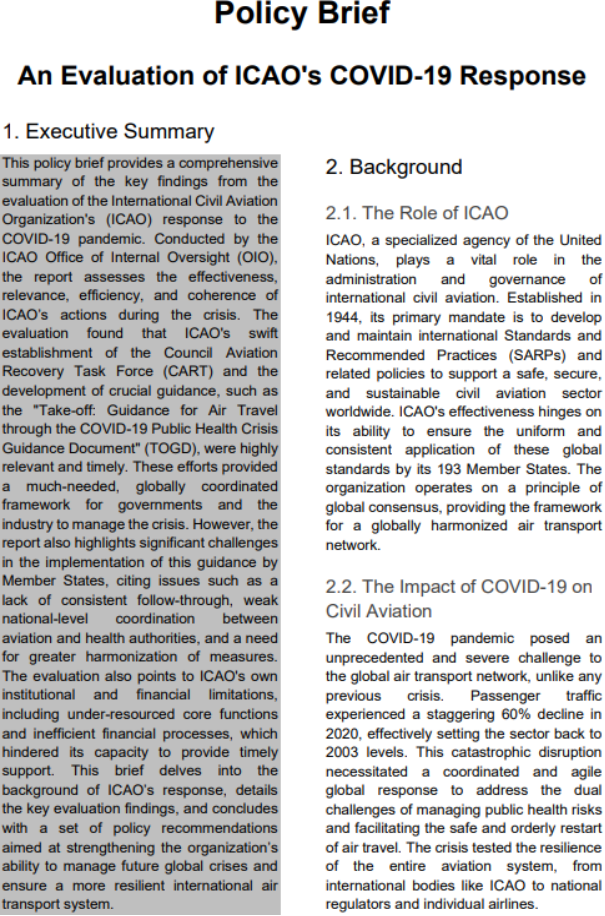
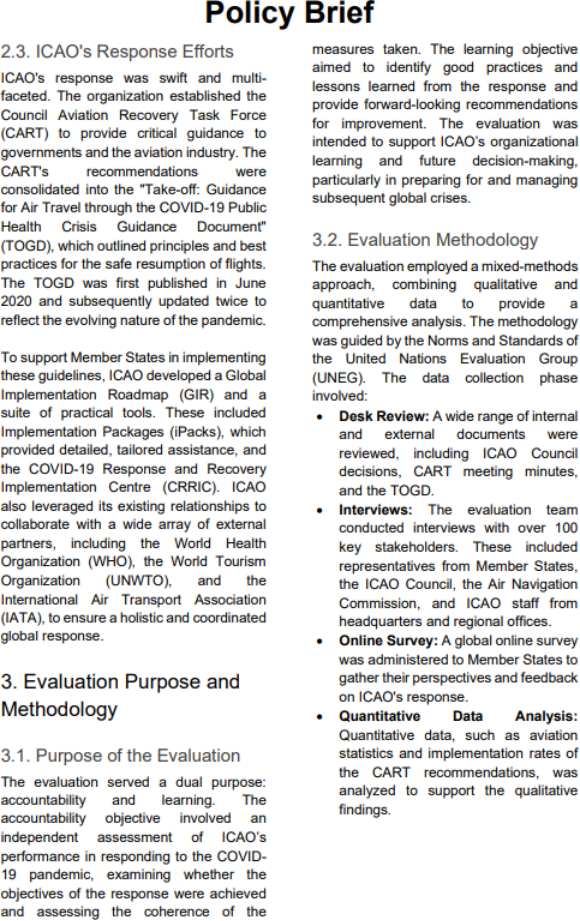
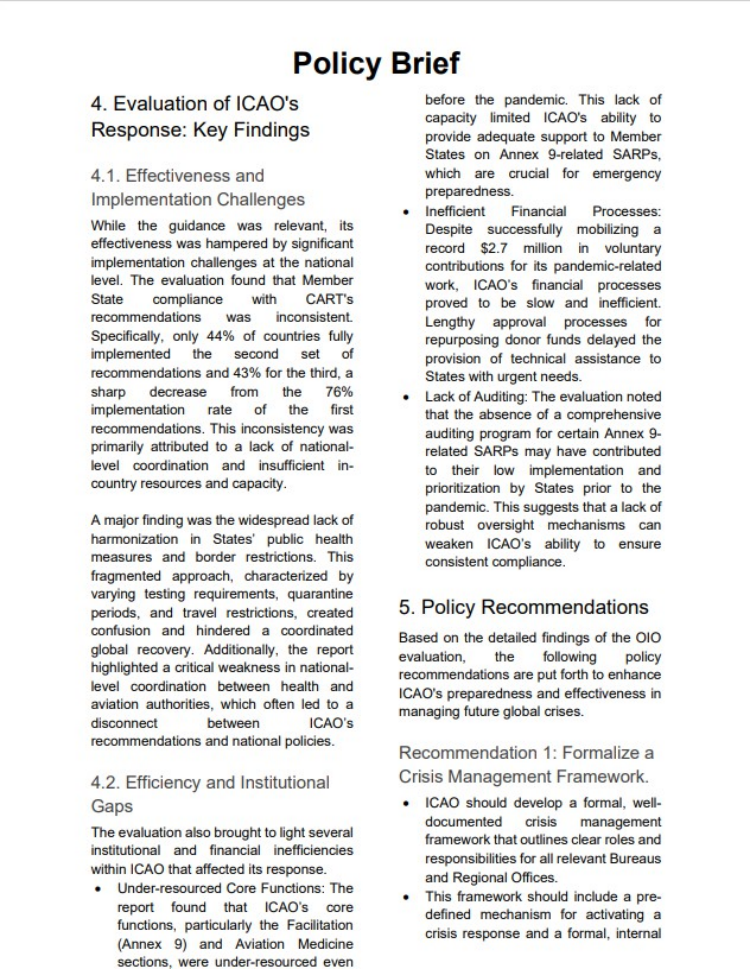
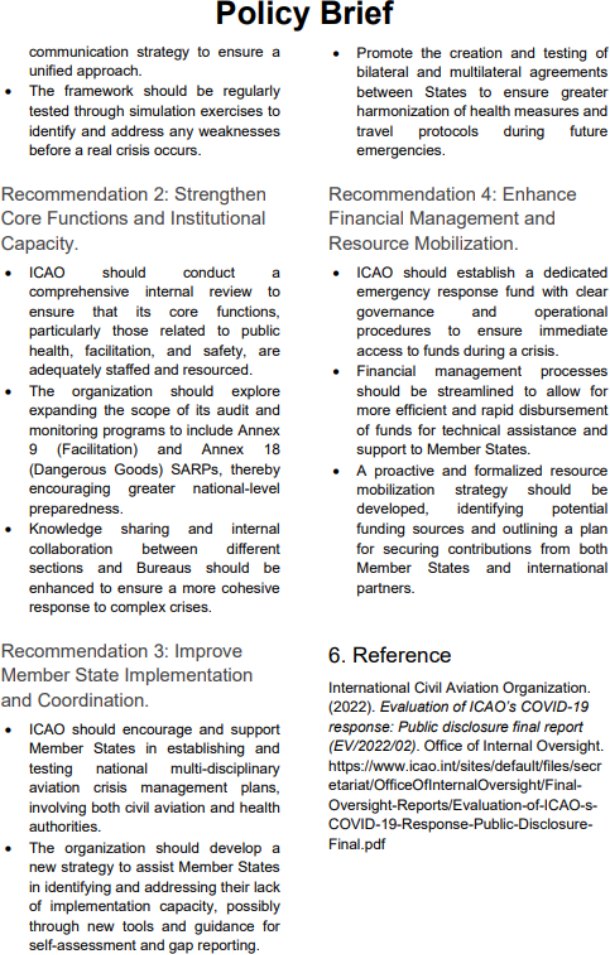
Buy Custom Answer Of 7019ENG Assignment & Raise Your Grades
Get A Free QuoteAre you searching for the solution of the 7019ENG Air Transport Business Environment and Policy Assignment at Coventry University? Then worry no need. There are specialized professionals for all categories of assignments who offer you plagiarism-free and superior content. You are assured that our Engineering Assignment Help will make you productive and help you achieve high grades in your academic year. A free list of coventry university assignment samples written by PhD experts is also provided here that can help you boost your study power and check the quality of the report. So contact us today and get your top-notch assignment!
Hire Assignment Helper Today!
Let's Book Your Work with Our Expert and Get High-Quality Content
